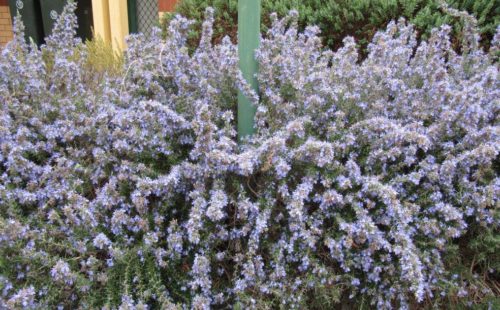
Gardening writer CEDRIC BRYANT says “old-fashioned”, reliable plants like rosemary, thyme, heaths and heathers will never go out of fashion.
ONE would think plants that have grown in the wild for millennia, and then domesticated for gardens, would never go out of fashion.

Rosemary, thyme and others were grown for their flowers, perfume, medicinal and culinary purposes. And yet plants do go out of fashion, with new fads taking their place. Often these new varieties have only been around for a few short years, and with all the vagaries of changing climates, may not last the distance.
For example, when we owned our Yass nursery 30 years ago heathers (calluna) and heaths (erica) were popular. The sight of hills covered in purple heather across the north of England and Scotland could bring a tear to the eye for some, as a reminder of home.
“Country Life” magazine in the UK has reported that the Heather Society is closing down due to falling membership. In the 1960s it had 1500 members, now dropped to 150, also not helped by the small number of heather varieties grown. A Lincolnshire nursery that used to grow more than a million heathers a year is now closed. One Scottish nursery used to grow 900 cultivars, now 30! These plants grow well here and once established are extremely drought-resistant, will tolerate heat and frosts and are beloved for their floral display in winter. Do not dismiss these classics in favour of new, and possibly not tried-and-tested, plants.

There are literally hundreds of “old-fashioned” reliable plants. Rosemary (pictured above) is a perfect companion for heaths and heathers, and our native plants. These are in flower now, so it is the perfect time to choose the colours. Keep in mind they will be most effectively planted in groups of the same colour and variety, using the threes, fives or sevens principle. These are also ideal for hanging gardens.
LIKE animals, many plants go into winter hibernation; followed by the soft green leaves that herald the advent of spring. It’s a time of rebirth of nature, with bulbs usually the first to appear; although it will still be a few weeks before the spring garden explodes in a kaleidoscope of colour. To help nature provide the ultimate display, all bulbs can be given a boost with liquid seaweed fertiliser.
NORMALLY at this time of the year, snails and slugs would be in hibernation. With regular rainfall and relatively mild weather, these little darlings are still active. You may not readily see them, but while moving some pots in the garden I found a cluster of big slugs with the evidence on geranium leaves. Use Multicrop snail and slug killer, as it’s safer if you have pets or other inhabitants such as blue-tongue lizards. Check the ingredients of any snail bait for metaldehyde, which was banned by the environment secretary in the UK last year as an unacceptable risk to birds and mammals.
FINALLY, it is the perfect time to divide Campanula persicifolia or Canterbury bells. Enjoy the changing leaf colour of many varieties of salvias to rich autumn purple now flowering has finished. Then cut to ground level in a month’s time and they can be divided.
Who can be trusted?
In a world of spin and confusion, there’s never been a more important time to support independent journalism in Canberra.
If you trust our work online and want to enforce the power of independent voices, I invite you to make a small contribution.
Every dollar of support is invested back into our journalism to help keep citynews.com.au strong and free.
Thank you,
Ian Meikle, editor




Leave a Reply